人教新课标高中英语必修五 Unit 2 The United Kingdom reading 课件(共26张PPT)
文档属性
| 名称 | 人教新课标高中英语必修五 Unit 2 The United Kingdom reading 课件(共26张PPT) |  | |
| 格式 | ppt | ||
| 文件大小 | 1.6MB | ||
| 资源类型 | 教案 | ||
| 版本资源 | 人教版(新课程标准) | ||
| 科目 | 英语 | ||
| 更新时间 | 2021-01-17 14:48:03 | ||
图片预览

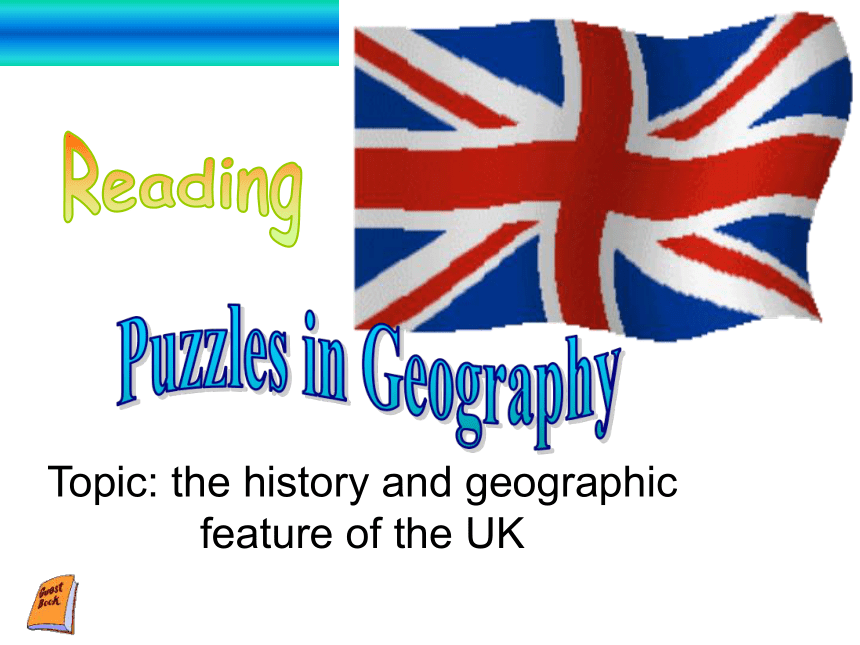
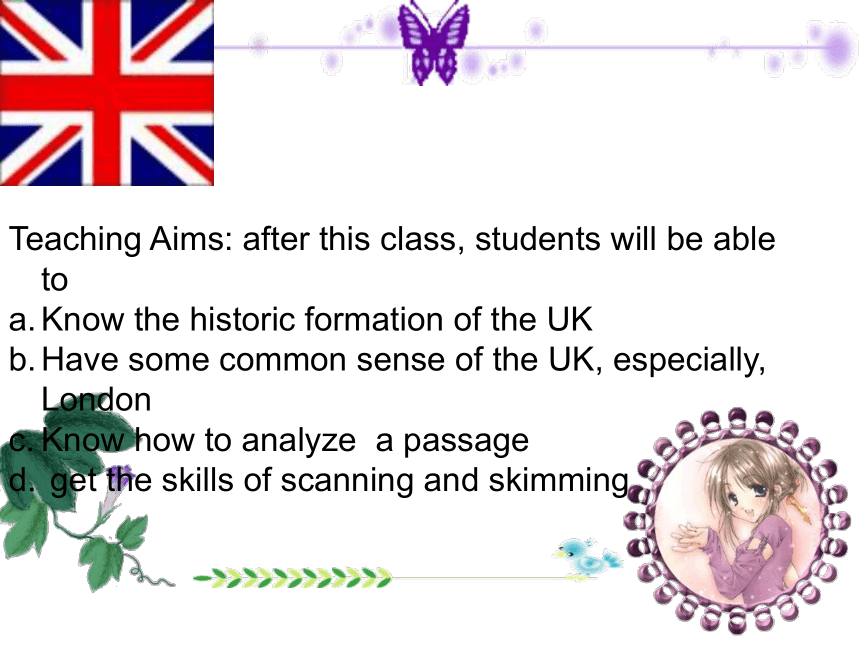

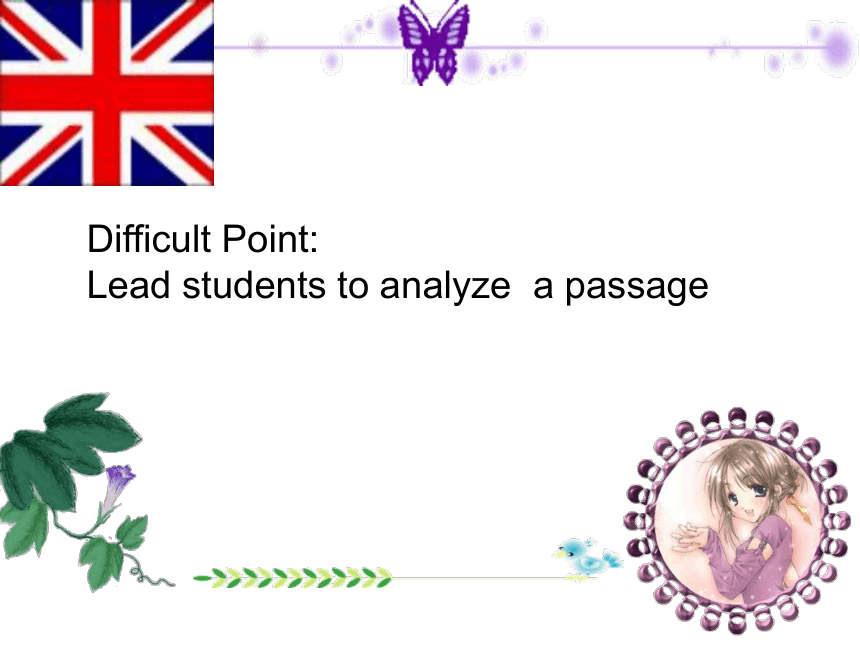
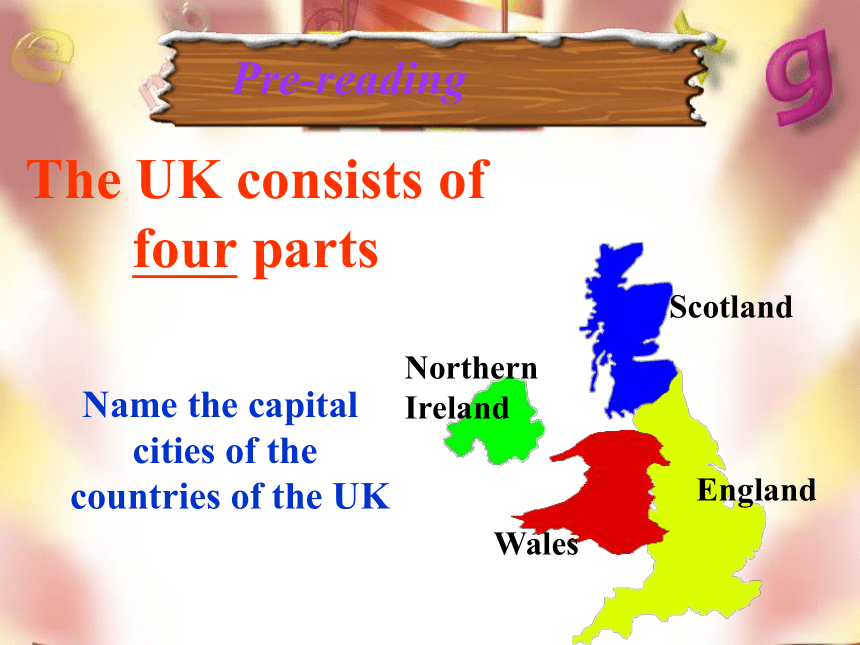
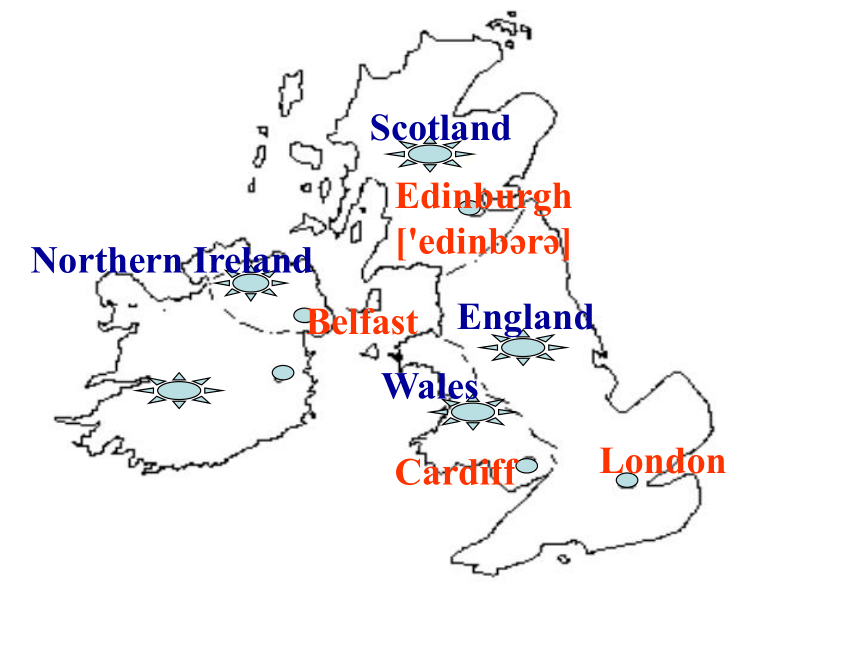
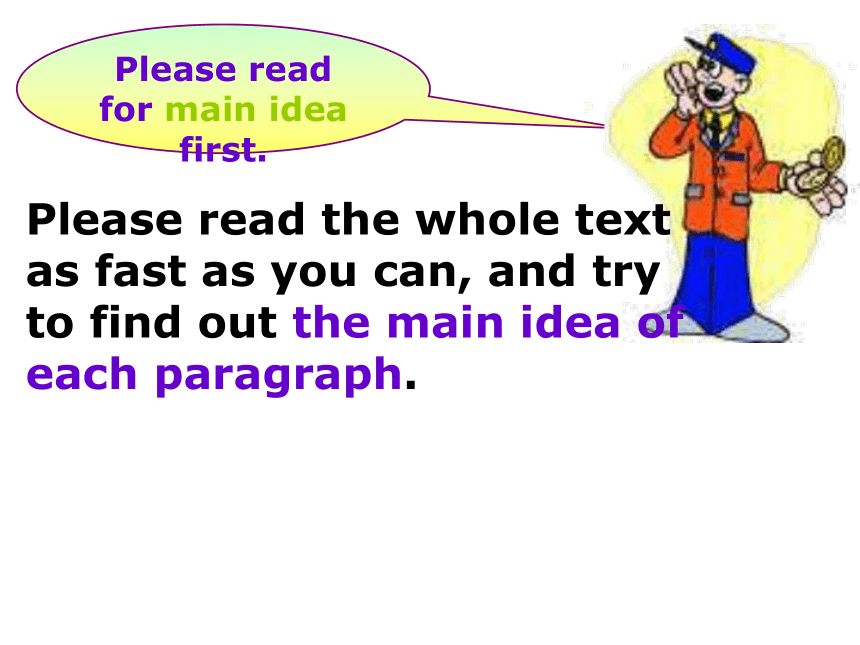

文档简介
Topic: the history and geographic feature of the UK
Teaching Aims: after this class, students will be able to
Know the historic formation of the UK
Have some common sense of the UK, especially, London
Know how to analyze a passage
get the skills of scanning and skimming
Teaching Important Points:
Lead students find the historic formation of the UK
Train them to get the main idea of each paragraph
Get them know how to summarize a passage
Difficult Point:
Lead students to analyze a passage
England
Wales
Scotland
Northern Ireland
The UK consists of
four parts
Pre-reading
Name the capital
cities of the
countries of the UK
Scotland
Edinburgh['edinb?r?]
England
London
Wales
Cardiff
Northern Ireland
Belfast
Please read for main idea first.
Please read the whole text as fast as you can, and try to find out the main idea of each paragraph.
How did England and Wales join
together and how did Great Britain and UK come into being
The geographical division of England and characteristics of each zone
Parts of UK
Administration of UK
The culture of London
Paragraph 2
Paragraph 1
Paragraph 3
Paragraph 5--6
Paragraph 4
Wales
England
Scotland
North Ireland
the United Kingdom
13th century
17th century
20th century
Part 1—About the UK
Paragraph 1--3
Time order
England
13th century
17th century
Get Ireland connected to form the United Kingdom
20th century
Northern Ireland
Only Northern Ireland joined with Great Britain to become the United Kingdom
20th century
Part 1—About the flag
Paragraph 1--3
Make a summary of the passage
The full name of England is the ______ ________ of Great Britain and Northern Ireland .It consists of four parts ,they are ________,__________,_________ and ________________, people always think ______is a part of England. The flag of the UK is called the ________ ______.The four countries have different ____________and ______ _______as well as different _________ ______.
United
Kingdom
England
Scotland
Wales
Northern Ireland
Wales
Union
Jack
educational
legal
systems
football
teams
Fill in the blanks
Part 1—About the UK
Paragraph 1--3
Part 2 --
About England
North :
Midlands:
South:
large industrial cities
large industrial cities
Most of the population
settled there
Paragraph 4
Where can you find more about British history
and culture?
In older but smaller towns first built by the Romans.
historical
treasures
museums
art collections
theatres
parks
buildings
The oldest building built by … in the 1060s.
The oldest castle constructed by …rulers in 1066.
The oldest port built by … in the 1st century.
Part 3 –
About London
Paragraph 5--6
Make the invaders in order according to the time
the Romans
the Anglo-Saxons
the Vikings
the Normans
Part 3 –About London
Paragraph 5--6
the Anglo-Saxons
The Romans
the Vikings
the Normans
The Romans
The Anglo-Saxons
The Viking
The Normans
left their language and
their government
left their towns and roads
left castles and words
for food
influenced the vocabulary
and place-names of the
North
The influence of the invaders
Which group of invaders did not influence London?
Now let’s read for detailed information.
The UK
contains four countries England , Wales, Scotland and Northern Ireland.
In the 13th century
Wales was linked to England.
In 1603
England and Wales were joined to Scotland.
Sometime later
Southern Ireland broke away and Northern Ireland joined with England , Wales and Scotland. Thus the UK came into being.
England
the largest of the four countries, consist of the South, the Midlands and the North of England.
London
the greatest historical treasures of all, has museums, art collections , the theatres, parks and buildings.
The four groups of invaders
the Romans, Anglo-Saxons , Vikings and Normans.
Homework
Write a summary of the reading passage
Teaching Aims: after this class, students will be able to
Know the historic formation of the UK
Have some common sense of the UK, especially, London
Know how to analyze a passage
get the skills of scanning and skimming
Teaching Important Points:
Lead students find the historic formation of the UK
Train them to get the main idea of each paragraph
Get them know how to summarize a passage
Difficult Point:
Lead students to analyze a passage
England
Wales
Scotland
Northern Ireland
The UK consists of
four parts
Pre-reading
Name the capital
cities of the
countries of the UK
Scotland
Edinburgh['edinb?r?]
England
London
Wales
Cardiff
Northern Ireland
Belfast
Please read for main idea first.
Please read the whole text as fast as you can, and try to find out the main idea of each paragraph.
How did England and Wales join
together and how did Great Britain and UK come into being
The geographical division of England and characteristics of each zone
Parts of UK
Administration of UK
The culture of London
Paragraph 2
Paragraph 1
Paragraph 3
Paragraph 5--6
Paragraph 4
Wales
England
Scotland
North Ireland
the United Kingdom
13th century
17th century
20th century
Part 1—About the UK
Paragraph 1--3
Time order
England
13th century
17th century
Get Ireland connected to form the United Kingdom
20th century
Northern Ireland
Only Northern Ireland joined with Great Britain to become the United Kingdom
20th century
Part 1—About the flag
Paragraph 1--3
Make a summary of the passage
The full name of England is the ______ ________ of Great Britain and Northern Ireland .It consists of four parts ,they are ________,__________,_________ and ________________, people always think ______is a part of England. The flag of the UK is called the ________ ______.The four countries have different ____________and ______ _______as well as different _________ ______.
United
Kingdom
England
Scotland
Wales
Northern Ireland
Wales
Union
Jack
educational
legal
systems
football
teams
Fill in the blanks
Part 1—About the UK
Paragraph 1--3
Part 2 --
About England
North :
Midlands:
South:
large industrial cities
large industrial cities
Most of the population
settled there
Paragraph 4
Where can you find more about British history
and culture?
In older but smaller towns first built by the Romans.
historical
treasures
museums
art collections
theatres
parks
buildings
The oldest building built by … in the 1060s.
The oldest castle constructed by …rulers in 1066.
The oldest port built by … in the 1st century.
Part 3 –
About London
Paragraph 5--6
Make the invaders in order according to the time
the Romans
the Anglo-Saxons
the Vikings
the Normans
Part 3 –About London
Paragraph 5--6
the Anglo-Saxons
The Romans
the Vikings
the Normans
The Romans
The Anglo-Saxons
The Viking
The Normans
left their language and
their government
left their towns and roads
left castles and words
for food
influenced the vocabulary
and place-names of the
North
The influence of the invaders
Which group of invaders did not influence London?
Now let’s read for detailed information.
The UK
contains four countries England , Wales, Scotland and Northern Ireland.
In the 13th century
Wales was linked to England.
In 1603
England and Wales were joined to Scotland.
Sometime later
Southern Ireland broke away and Northern Ireland joined with England , Wales and Scotland. Thus the UK came into being.
England
the largest of the four countries, consist of the South, the Midlands and the North of England.
London
the greatest historical treasures of all, has museums, art collections , the theatres, parks and buildings.
The four groups of invaders
the Romans, Anglo-Saxons , Vikings and Normans.
Homework
Write a summary of the reading passage
